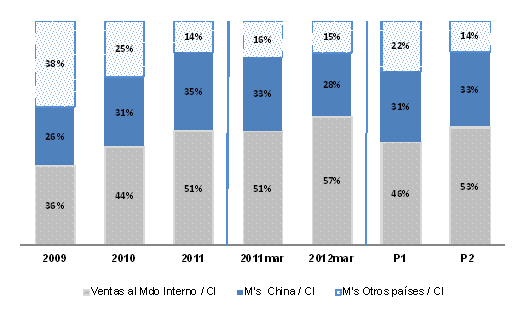early years requirements in major new developments ================================================== this document provides guidanc
Early Years requirements in major new developments
==================================================
This document provides guidance for Hampshire County Council and other
agencies in determining a requirement for early years and childcare
places to support new housing developments.
1.
Demand for places:
The starting point is to calculate the number of children in each age
group expected from the new housing. The Hampshire Home Movers survey
has indicated a factor of 0.3 children per new dwelling and this is
adopted for consideration of early years demand. There are five age
groups for early years and childcare (< 1 years; <2 years; <3 years;
<4 years; <5 years), therefore the average number for each individual
age group is 0.3/5 = 0.06. This can be considered the “cohort size”.
Estimator for number of Early Education places
in new housing developments.
New Policy due 2017
Number of New Homes
no houses x 0.3*
2 year olds (20% of cohort)
3 year olds (93% of cohort)
4 year olds (32% of cohort)
All EYE Age Groups
Estimated EYE Hours required 570 hrs (15 hrs)
Estimated EYE Hours required
1140 hrs (30 hrs)
100
30
2
6
2
8
4,617
9,234
500
150
6
28
10
41
23,085
46,170
800
240
10
45
15
65
36,936
73,872
1,000
300
12
56
20
82
46170
92,340
3,000
900
36
167
58
243
138,510
277,020
5,000
1,500
60
279
96
405
230,850
461,700
* based on Hampshire Home Movers Survey and 5 cohort ages <1 years; <2
years;<3 years;
<4 years; <5 years
Early Years Education (EYE) is a statutory offer which is available
universally to all 3 and 4 year olds. For two year olds, the offer is
limited to children of families who meet low income criteria. In
Hampshire, children can start their free entitlement in the term after
their second/third and fourth birthday and can receive a maximum of
570 hours per child’s eligibility year. In June 2015 the Government
indicated that it intends to increase the offer to 1140 hours for
working parents from 2017. The Childcare Bill will confirm this.
From September 2013, there has been no requirement for the EYE hours
to be limited to the school academic year, offering parents the
flexibility to take up their hours across the number of weeks that the
provision is open. The free hours can also be stretched across more
than 38 weeks.
The demand for three year old places is high and trend data in
Hampshire indicates that in the region of 90-95% of the three year old
population take up this entitlement. It is, therefore, expected that
there will be continued high demand from this age group within any new
housing development.
The demand for four year old places, prior to their starting school,
is also high. However, due to four year olds taking up their school
place, often in the September after their fourth birthday, the demand
within the pre-school and nursery sector is in the region of 32-36% of
the four year old population.
The demand for two year olds continues to grow with 4,000 children
likely to be eligible for this statutory offer for families who meet
certain low income level criteria outlined in section 2 below.
The graph below indicates the actual take-up from 2012 based against
Small Area Population Forecasts for the same years and outlines the
trend that children have consistently accessed their early years
education within Hampshire. It is expected this will continue.
2.
Low income families
Where housing developments include a significant level of social
housing, shared ownership schemes and/or dwellings that would attract
low income families, developers and planners should consider
accessibility to affordable early years education and childcare.
Developers and planners should be aware that, from September 2014, the
provision of free early years education to eligible 2 year olds became
a statutory offer. The offer will provide the same choices for parents
as the free early years education entitlement for 3 and 4 year olds.
The exception is that the eligibility will primarily be based on
income assessment.
The eligibility for 2 year old funding is:
Children must meet either criterion A, B or C to be eligible for
funding.
Criterion A – Economic: Children whose parents/carers are in receipt
of one or more of the following benefits:
*
Income Support
*
Income based Job Seekers Allowance
*
Income-related Employment and Support Allowance
*
Support under Part 6 (VI) of the Immigration and Asylum Act 1999
*
The guaranteed element of State Pension Credit
*
Child Tax Credit and have an annual gross household income of no
more than £16,190 as assessed by Her Majesty's Revenue and Customs
*
Working Tax Credit and have an annual household gross income of no
more than £16,190, as assessed by Her Majesty's Revenue and
Customs
*
Working Tax Credit 4 week run on (the payment you get when you
stop qualifying for Working Tax Credit)
Criterion B – Children looked after by the Local Authority:
*
Child in Care
*
Child Leaving Care in Special Guardianship, adoption or child
arrangements order (previously residence order)
N.B. Details of a Social Worker able to verify the above information
is required.
Criterion C – Child with Special Educational Needs and/or Disability
as defined by:
*
Children in receipt of Disability Living Allowance (DLA)
*
Child with a Statement of Special Educational Needs (SEN)
*
Child with an Education, Health and Care Plan (EHC Plan)
2.
Space requirements and regulations
The space required to fulfil these requirements is stipulated within
the Statutory Early Years Foundation Stage_1
Section 3.57 sets out premises requirements and states, the premises
and equipment must be organised in a way that meets the needs of
children. In registered provision, providers must meet the following
indoor space requirements:
• Children under two years: 3.5 m2 per child.
• Two year olds: 2.5 m2 per child.
• Children aged three to five years: 2.3 m2 per child.
These calculations should be based on the net or useable areas of the
rooms used by the children, not including storage areas,
thoroughfares, dedicated staff areas, cloakrooms, utility rooms,
kitchens and toilets.
All early years and childcare operators must register with Ofsted as
the regulatory body. Ofsted will inspect an organisation’s ability to
meet expected standards covered within the Early Years Foundation
Stage. The Early Years Foundation Stage also contains expected minimum
requirements for the suitability of premises which can be found within
the same statutory framework document (accessed through the link
above). It is expected that all early years and childcare providers
are able to meet requirements to deliver the free early years
entitlement at the highest quality and Hampshire providers are
expected to achieve and maintain “good” and “outstanding” inspection
results.
4.
What developers should provide
Developers should consider 80 early years places for every 1,000
houses and that these places are offered through a mix of facilities
where possible. The childcare planning should allow for flexible hours
of opening and covering at least 7am to 7pm for full day care.
For 1,000 houses, it is anticipated that one full day provision of 50+
places, together with an additional 30 places from shared community
premises, would meet the needs of this size of development.
Where developments provide a high number of social housing dwellings,
it is considered there will be the potential for greater demand for
affordable childcare and access for two year old funded provision. It
is likely that this childcare will be required to support employment
activities and, therefore, any provision to support lower income
families should have regard to the flexibility of opening and closing
times of childcare to meet the employment or return to learning
requirements of parents and carers.
Through childcare sufficiency assessments (2008, 2011), parents prefer
the early years and childcare facilities to fall within a 1-2 mile
radius of their homes.
It is also known through the Early Years Census 2013 that there were
approximately 50% of the small area population of two year olds taking
up some childcare which is not part of early years free entitlement.
The childcare market has also seen parents preferring provision that
is close to, or on the site of, infant or primary schools where the
school site is large enough to accommodate the provision.
4.
Timing of the early years and childcare development
There must be early consideration of the allocation of the sites
and/or premises for early years and childcare. It is recommended that
such provision is considered for development and occupation at the
same time as that for primary schools. This is especially important
within developments that have little or no accessible early years and
childcare provision adjacent to the new housing development.
The impact of a new housing development, alongside current capacity in
the early years and childcare market, should also be considered in
terms of early occupation of families and their ability to access
provision and whether any interim measures are put in place prior to
thresholds of dwellings occupied being reached.
4.
How this should be provided
Recent practice suggests to planners / developers that provision
should be made for early years and childcare facilities for children
0- 5 years within their plans for the housing developments. Childcare
facilities should either be associated within / alongside community
facilities or in a dedicated space identified and available for
development. In either case, it is suggested that there are advantages
with locating adjacent to, or combined with, primary school sites.
For dedicated nursery/childcare facilities, we suggest an area of 0.25
hectares. For combined school / pre-school sites this can be reduced
to 0.2 hectares as there can be economies with a more flexible site
layout when both are planned together. These site areas are estimates
that the Council has used in other recently provided facilities, but
will need to be tested against the draft accommodation briefs.
It is assumed that the sites would be made available through an open
and transparent process to interested early years and childcare
providers, or through the district councils and community associations
where it is expected that childcare will be operated within community
facilities.
The location of any provision must enable good access for walking as
well as having good public transport and motor-vehicle transport links
and be within a 1-2 mile radius of the main housing development.
It should be noted that early years and childcare provisions of 50+
places are considered more economically viable and may attract the
best investment opportunity from the sector.
It is also a requirement that a childcare operator that is seeking to
accommodate children for free early years education makes an
application to Hampshire County Council prior to opening their
provision. Any developer who has engaged a childcare establishment to
deliver or take up opportunity on their site should ensure the
childcare provider contacts the Council at: 01962 847070 or email
[email protected]
4.
Contact
Hampshire County Council’s Children’s Services can be contacted to
discuss any support requirement in selection of appropriate high
quality early years and childcare providers or any aspects of the
regulation and legislation requirements.
The childcare and early years education development team can be
contacted on 01962 847070 or [email protected]
Links to documents that may support design of childcare buildings:
http://webarchive.nationalarchives.gov.uk/20110118095356/http:/www.cabe.org.uk/files/sure-start-every-building-matters.pdf
1 Statutory Early Years Foundation Stage 2014
SFYC 2015
 KLUB LJUBITELJEV NEMŠKIH BOKSERJEV SLOVENIJE POČEHOVA 82 SI2211 PESNICA
KLUB LJUBITELJEV NEMŠKIH BOKSERJEV SLOVENIJE POČEHOVA 82 SI2211 PESNICA KÉRDŐÍV A KÖZOKTATÁS MEGÚJULÁSÁÉRT – EREDMÉNYEK GYORSJELENTÉS 2016 ŐSZÉN
KÉRDŐÍV A KÖZOKTATÁS MEGÚJULÁSÁÉRT – EREDMÉNYEK GYORSJELENTÉS 2016 ŐSZÉN ANNEXURE1 (FACE) TITLE (FONT SIZE 1222 BOLD ALL CAPITAL)
ANNEXURE1 (FACE) TITLE (FONT SIZE 1222 BOLD ALL CAPITAL) A LTERNATIVE TEXT ONTARIO’S INTEGRATED ACCESSIBILITY STANDARDS REGULATION (IASR)
A LTERNATIVE TEXT ONTARIO’S INTEGRATED ACCESSIBILITY STANDARDS REGULATION (IASR) POWERPLUSWATERMARKOBJECT357831064 GRADE 7 MODEL SCIENCE UNIT 4 STRUCTURE AND
POWERPLUSWATERMARKOBJECT357831064 GRADE 7 MODEL SCIENCE UNIT 4 STRUCTURE AND GESTIÓN Y MANTENIMIENTO DE REDES GESTIÓN ADMINISTRATIVA Y TARIFACIÓN
GESTIÓN Y MANTENIMIENTO DE REDES GESTIÓN ADMINISTRATIVA Y TARIFACIÓN HABILIDAD GERENCIA TRABAJO EN EQUIPO REACTIVOS TRABAJO EN EQUIPO
HABILIDAD GERENCIA TRABAJO EN EQUIPO REACTIVOS TRABAJO EN EQUIPO RESOLUCIÓN PRELIMINAR DE LA INVESTIGACIÓN ANTIDUMPING SOBRE LAS IMPORTACIONES
RESOLUCIÓN PRELIMINAR DE LA INVESTIGACIÓN ANTIDUMPING SOBRE LAS IMPORTACIONES INFORME DE VALORACIÓN DE LA PREDEFENSA DE TESIS DOCTORAL
INFORME DE VALORACIÓN DE LA PREDEFENSA DE TESIS DOCTORAL CRIN SUBMISSION FOR THE REPORT OF THE UN SPECIAL
CRIN SUBMISSION FOR THE REPORT OF THE UN SPECIAL